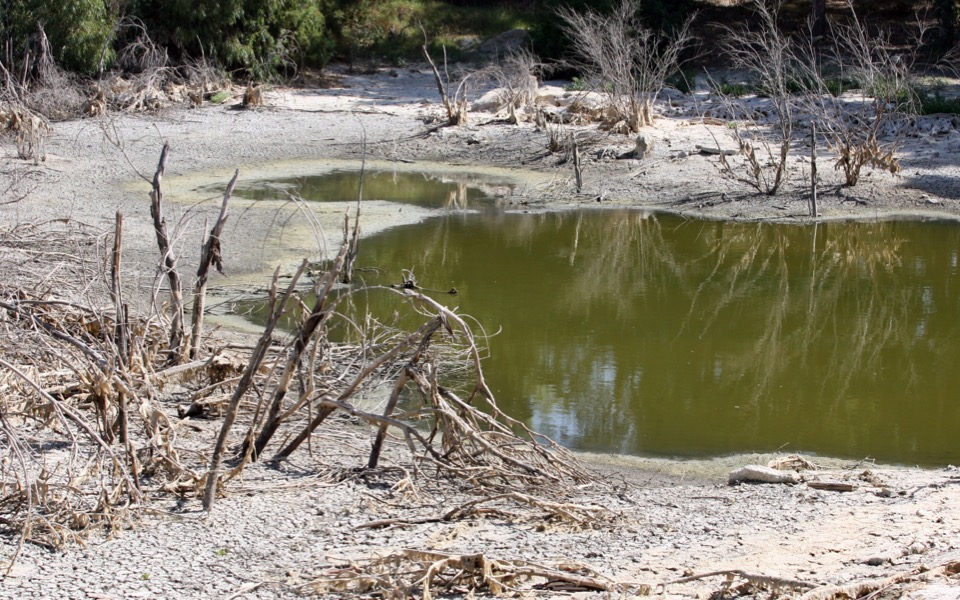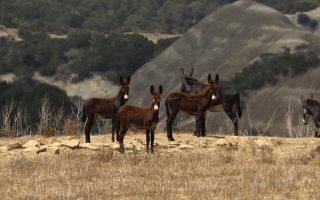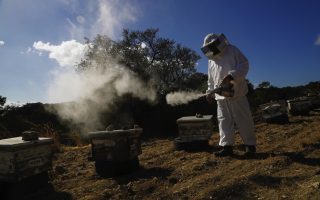Cyprus at risk of becoming a desert island

A toxic combination of decreasing rainfall, the abandonment of rural areas and an increase in water consumption over the past few decades has resulted in more than half the island of Cyprus being in immediate danger of desertification. Just 1.5 percent of the land area – the ridge of the Troodos mountain range – is not deemed to be at any such risk.
Cyprus has always been a place of limited water resources. But until the 1960s, consumption did not exceed availability. According to Cyprus’s Ministry of Agriculture, Natural Resources and the Environment, which has set up national action plan to combat desertification, “since the 1960s, first with the increased pumping of groundwater, then the use of surface water stored in dams, usage has increased tremendously.”
Higher living standards, tourism and a 15 percent drop in average annual rainfall since 1970 are all contributing factors. There has since also been a greater frequency of two- to three-year droughts, with summers getting longer and hotter.
Recent studies carried out as part of the desertification action plan found that 4.5 percent of the island – an area which surrounds the 1.5 percent that isn’t in any danger of desertification – is considered “humid,” with only a slight risk of drying up. Much of the rest of the island, however, is considered at least semi-arid and at an elevated risk of becoming so dry that it will become infertile.
Action plan
In an interview with Kathimerini Cyprus in June, Agriculture Minister Nicos Kouyialis said 57 percent of the island is in immediate danger of desertification and 42.3 percent is considered at moderate risk. Meteorologists and climatologists warn that the number of unusually hot days are increasing and on track to exceed 30 per summer in the coming years. At the same time, they warn that rainfall levels will decrease by more than 100 millimeters each year.
The Agriculture Ministry’s new action plan focuses on 17 points. These include identifying the moisture carrying capacity of grazing areas, incentives for the maintenance of terraces and drylands for soil retention, measures to enhance traditional farming activities, land use control in critical areas, and the introduction of incentives to control and reduce water consumption.
“The goal is to strengthen Cyprus’s capacity to adapt to observed and predicted changes in weather patterns, as well as effectively prevent and address the negative impacts of climate change,” said Kouyialis.
“The adoption of such actions should help to promote a sustainable economy, optimize resource management, improve efficiency and protect infrastructure. At the same time it will create new opportunities,” he added.
Greece also at risk
Many parts of other countries in the Mediterranean basin, including Greece, have also been deemed to be at high risk of desertification. Attica is one, due to high population stress, as is the island of Crete, particularly east of Iraklio, due to adverse bioclimatic, hydrological and terrestrial conditions. Eastern Crete is under strain from overexploitation of resources by tourism. Western Lesvos is another high-risk area, as are the Cyclades islands, the Kilkis region of northern Greece and the hills of central Thessaly.
The Bank of Greece estimates the effects of climate change will cost the country 123 billion euros between now and 2100. A committee tasked with studying the macroeconomic cost of climate change has been set up by the central bank and estimates such costs will account for 1.5 percent of the country’s GDP between 2025 and 2050, 0.9 percent between 2051 and 2070 and 0.1 percent beyond 2070.





